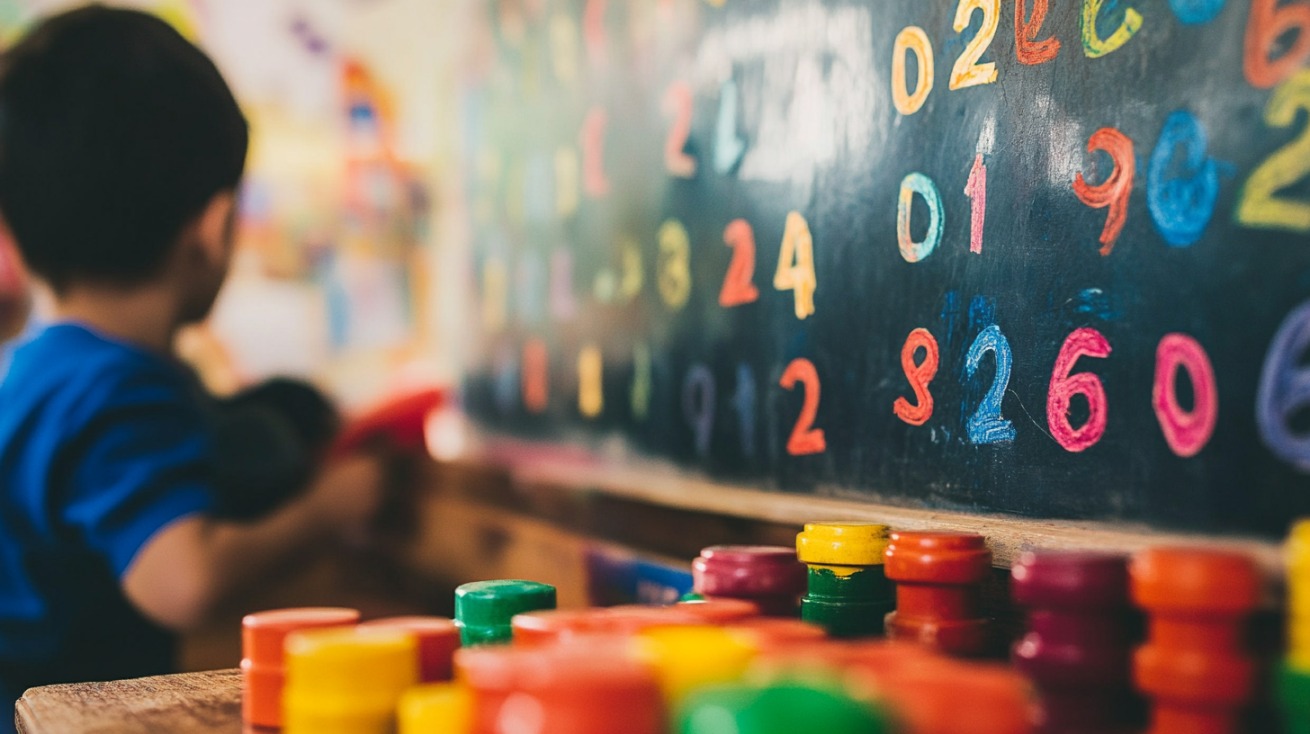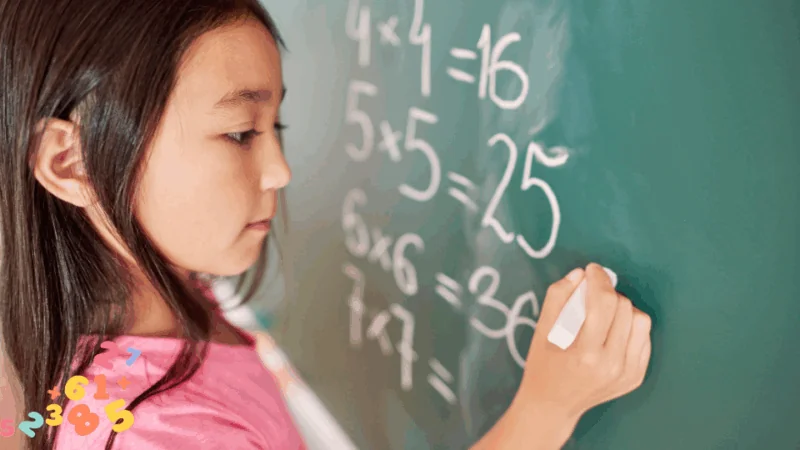
Share Post:
Number sentences might sound grand, yet they’re usually just equations or inequalities, stuff like “5 + 3 = 8” or “10 > 7.”
Anyone who’s spent time in a classroom has probably run into them. They form a solid foundation for bigger math concepts. Think of them as the building blocks that open doors to algebra, geometry, and beyond.
Table of Contents
ToggleWhat Are Number Sentences?
There’s a term that comes up in math classes: number sentence. It simply means a statement that includes numbers, math operations, and symbols to show a relationship. Something along the lines of “6 + 2 = 8” or “15 > 12” is a good example.
- Numbers: Whole numbers, fractions, decimals, or even unknowns (like x).
- Operations: Addition, subtraction, multiplication, division—those basic actions we do with numbers.
- Relational Symbols: = (equal), > (greater than), < (less than), and so on.
It’s often compared to how a regular sentence works in English but with digits and math signs instead of words and punctuation. The idea is to express a complete mathematical thought – like a mini story, except it’s told through numbers and symbols.
A Quick Example
“8 + 4 = 12”
- Numbers? 8 and 4
- Operation? + (addition)
- Relational symbol? = (equal)
Now you’ve got a straightforward sentence. It’s verifying that 8 and 4 together make 12.
Why Do They Matter So Much?
Ever wonder what makes number sentences so important? They’re like a key that unlocks deeper math skills.
Kids get used to them early in their education. Soon, bigger topics like algebra start making sense. Without that stepping stone, advanced math could feel like an impossible puzzle.
- Core Math Fluency: Regular practice with number sentences helps kids see how numbers interact. They learn that adding always brings a bigger result (unless negative numbers are in the mix, but that’s a story for another day).
- Foundation for Algebra: When variables show up (like x or y), number sentences become algebraic equations. That’s how students progress from “2 + 3 = 5” to “2 + x = 5, solve for x.”
- Real-World Connection: People use them more often than you might think, from calculating tips to doubling recipes. More on that later.
- Logical Thinking: Determining if a statement like “4 + 5 = 10” is true or false encourages kids to reason clearly about numbers.

Different Types of Number Sentences
There’s variety out there. Here’s a little table to keep it organized. Consider it a quick reference.
| Type | What It Shows | Example |
| Equality | Both sides have the same value | 6 + 4 = 10 |
| Inequality | One side is bigger or smaller | 9 > 5, 4 + 3 < 10 |
| Algebraic | Includes unknowns and variables | 3x = 15 (x = 5) |
| Fraction/Decimal | Precise calculations with fractions/decimals | 1/2 + 1/4 = 3/4, 2.5 + 1.5 = 4 |
| Open Sentences | Truth depends on the variable’s value | x + 2 > 5 (true if x>3) |
How Number Sentences Show Up in the Classroom

Educators don’t just toss equations at students and hope for the best. There’s usually a system behind introducing number sentences:
1. Early Years (Kindergarten & First Grade)
- Simple addition and subtraction. Think “2 + 3 = 5.”
- Plenty of hands-on practice with blocks or counters.
- Building comfort with the idea that both sides of the equation must match in value when an equals sign is used.
Check out our quiz for first graders to test out your knowledge!
2. Second & Third Grade
- Multiplication and division come into play. For instance, “4 × 3 = 12.”
- Missing number spots: “___ + 6 = 10,” so kids can figure out “4” goes in the blank.
- Word problems start showing up more often.
3. Fourth Grade and Onward
- Multiple steps and order of operations appear: “2 + 3 × 4 = 14,” not “20.”
- Algebra basics: “x + 5 = 12.”
- Exploration of properties such as distributive property.
Real-Life Tie-Ins
Plenty of everyday moments turn into math scenarios. That’s where number sentences shine, because they translate real data into a neat mathematical statement.
- Budgeting: “If I make $500 a week and spend $200 on rent, $100 on groceries, $60 on utilities, how much is left?” That’s basically “500 – 200 – 100 – 60 = 140.”
- Cooking: “A recipe calls for 2 cups of sugar, but there’s only 1.5 cups in the pantry. How short am I?” That transforms into “2 – 1.5 = 0.5.”
- Travel: “Driving 60 miles per hour for 2 hours: total distance?” That’s “60 × 2 = 120 miles.”
Nothing too fancy, right? Yet it illustrates the everyday magic of number sentences, turning real-world moments into math statements that solve problems quickly.
Getting Students Hooked

Convincing kids to love math can be a big ask. Some cringe at the thought of equations. But number sentences can be a fun first step, especially if introduced in appealing ways.
Use Manipulatives and Visuals
- Colorful blocks, beads, or Legos are fantastic. A statement like “3 + 2 = 5” feels more concrete if kids move around objects.
- Number lines also help. Draw one, show the jump from 0 to 3, then 3 to 5. Super easy to see how addition works.
Turn Word Problems into Math Statements
Real-life stories can spark interest. Maybe mention “Sam had 10 candies and gave away 4. How many remain?” Pupils turn that story into “10 – 4 = 6.”
Group Activities and Games
- Puzzles that make kids guess the missing number.
- Small competitions where learners solve number sentences for points or stickers.
- Collaborative challenges where they write word problems based on daily life.
A bit of friendly competition or creativity can spark genuine enthusiasm.
Stepping into Algebra
Bringing variables into the mix might sound like a giant leap. Actually, it’s simply a tweak: replace a known number with a letter.
- “6 + 3 = 9” becomes “6 + x = 9.”
- Solve for x by subtracting 6 from both sides, and you get “x = 3.”
That’s algebra in action, but in a form that doesn’t feel super intimidating. By gradually showing how a letter can represent an unknown, kids start thinking in more abstract ways.
Troubleshooting Common Hiccups

Not everyone takes to math like a fish to water. Some recurring snags pop up:
Order of Operations Confusion
A student might see “2 + 3 × 4” and try to do “(2 + 3) × 4 = 20” instead of the correct “2 + 12 = 14.”
- Fix: Encourage them to follow “PEMDAS” or whichever order-of-operations acronym they know (Parentheses, Exponents, Multiply/Divide, Add/Subtract).
Mixing Up Symbols
Kids might read “>” and think it means “less than.”
- Fix: Simple memory tricks can help: “> points to the bigger number” or “Alligator mouth eats the larger value.”
Forgetfulness Around the Equal Sign
Sometimes kids guess that “=” just means “the answer comes next.”
- Fix: Remind them it signifies both sides have the same value. Using a scale or balance in class can drive this home.
Examples
Check out a few statements spanning different skill levels:
1. Basic Addition/Subtraction
- “7 + 2 = 9”
- “10 – 4 = 6”
2. Multiplication/Division
- “3 × 4 = 12”
- “24 ÷ 8 = 3”
3. Inequalities
- “5 < 8”
- “10 ≥ 7”
- “12 ≠ 10”
4. Algebraic
- “x + 5 = 9”
- “2x = 14”
- “y – 3 = 11”
5. Fractions and Decimals
- “1/2 + 1/4 = 3/4”
- “0.75 × 2 = 1.5”
Pro Tips for Teachers and Parents
Everybody wants to see kids build confidence and skill in math while having fun, right?
- Integrate Math Talk in Daily Life: Count steps to the park or calculate how many pizzas are needed for a sleepover. Using math in everyday chatter normalizes it.
- Use Clear, Simple Language: Replace big words with direct instructions. “Subtract 5 from both sides” is more concrete than complicated phrasing.
- Draw Pictures: If a child struggles with “8 – 3 = 5,” sketch eight apples and cross out three. Visual learning is powerful.
- Offer Gentle Encouragement: Mistakes are part of the process. Remind them that messing up is common in math (and in life!).
- Be Willing to Show Enthusiasm: If grownups seem interested in math, kids often pick up on that energy.

Bigger Significance in Math Land
Number sentences don’t just live in elementary school. They appear in geometry (like “a² + b² = c²” for right triangles).
They show up in data analysis (e.g., “mean = sum of values ÷ number of values”) and lead into more advanced math classes. At the heart of it all is that simple idea: expressing a numeric relationship in a clear, symbolic way.
They’re also a great checkpoint for educators. Asking students to complete or create a number sentence shows whether they can handle an operation. It’s a quick method to see progress without burying them in pages of worksheets.
Wrapping Up
Number sentences, at first glance, might look like just a bunch of numbers and symbols. But they play a pivotal role in math growth, from teaching kids how addition works all the way to figuring out unknowns in algebra. They’re also handy in regular life for everyday calculations.
So, keep them in your teaching or parenting toolkit. You’ll see how they build a bridge between basic arithmetic and advanced math thinking.
Related Posts:
- Algebra 2 Essentials in 2025 – Must-Know Concepts & Skills
- Arithmetic vs. Geometric Sequences - Key Differences…
- Whole Numbers Explained - Definition, Uses, and Key…
- Why 1 Is Not a Prime Number - A Simple Explanation
- Why Math Matters in Everyday Life – Surprising Ways…
- High-Paying Jobs You Can Get with a Math Degree in 2025











